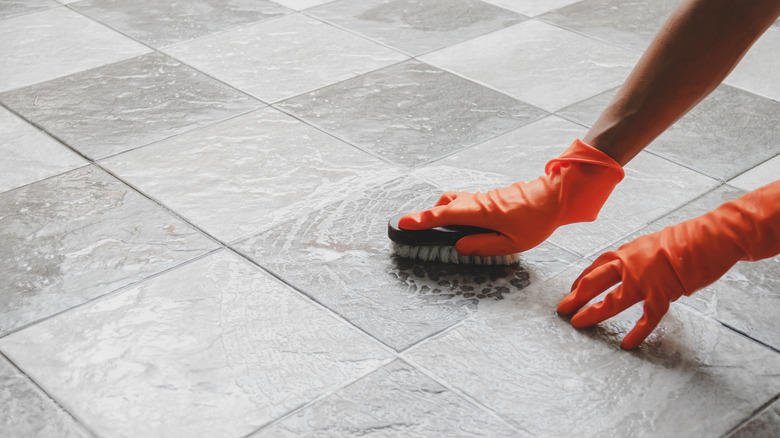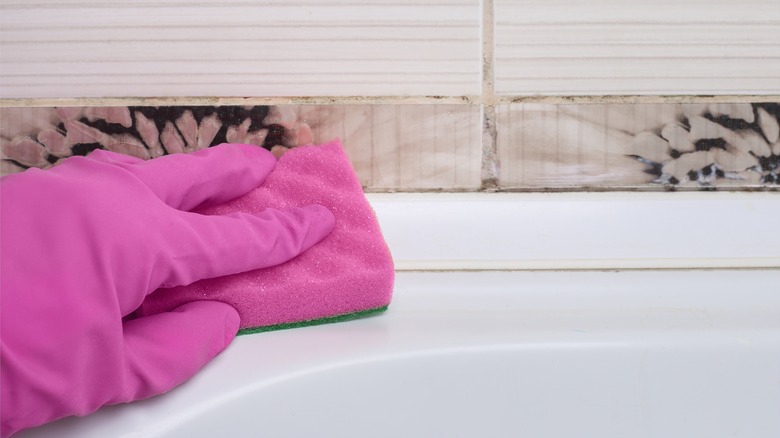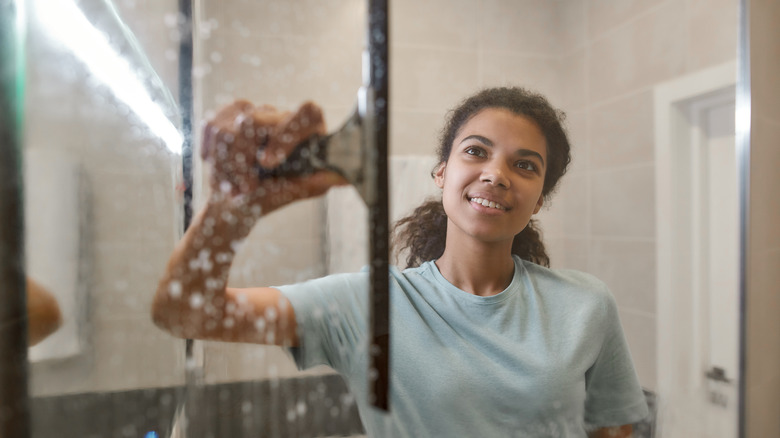Here's Exactly How To Get Rid Of Pink Mold In Your Shower
According to YouGovAmerica, folks in the U.S. love showers, and two in three Americans take at least one daily. However, while your walk-in shower may be a relaxing space where you can clean your body and reflect on your daily goals, chances are that you are not the only organism who enjoys spending time in that space. If you've noticed pinkish stains in your shower, you likely know exactly what we're talking about. However, it may surprise you that this "pink mold" in your shower isn't mold but the result of bacterial growth.
According to Forbes, what most people call "pink mold" is caused by common bacteria, namely Serratia marcescens and Aureobasidium pullulans, that thrive in warm, wet conditions. While bacteria of this sort isn't necessarily as dangerous to your health as black mold, it can cause several health issues for those with compromised immune systems. Pink mold can also present a danger for pets, so it's worthwhile for homeowners to banish it from their showers and take steps to ensure it doesn't come back.
How to remove pink mold from your shower
Luckily for homeowners, pink mold is relatively easy to remove from your shower, shower head, and other bathroom surfaces. According to Ultra-Fresh, it's simply a matter of mixing up a common cleaning solution, scrubbing your shower vigorously, and rinsing the area thoroughly. However, it's always a good idea to grab some rubber gloves and protective eyewear since these strains of bacteria can be dangerous when they're able to find a way into your body.
To clean the pink mold, mix half a cup of baking soda, a tablespoon of dishwashing liquid, and some water until your solution achieves a paste-like consistency. You'll then want to scrub your entire shower area, concentrating especially hard on any discolored areas with a pink, orange, or reddish hue. Once you've cleaned the entire surface and removed any bacterial stains, you can rinse out your shower to remove all traces of your cleaning solution. According to The Maids, you can fortify your deep-cleaning with a half-and-half water and vinegar mixture, allowing it to sit for about ten minutes before rinsing out the shower a final time.
How to prevent pink mold in your shower
Once you've removed the dreaded pink mold from your shower, you should take steps to prevent it from returning. Since this type of bacteria loves warm, wet spaces, this might not be the most straightforward task. However, by taking a few simple steps after you shower, you can significantly reduce the presence of pink mold in your bathroom. Per Forbes, Serratia marcescens bacteria thrives off the fats, minerals, and other elements left on soap and other cleansing products in your shower. Therefore, it's always a good idea to scrub away soap scum and rinse your entire shower thoroughly after using it. It would help if you also dried the shower with a towel or squeegee.
According to The Maids, minimizing absorbent and slow-to-dry items in your bathroom can also have a noticeable effect. Your shag shower mat may need to be replaced with a less bacteria-friendly product. Finally, to get rid of excess moisture in your bathroom after you bathe, consider running the fan for 15 minutes or so after you get out of the shower. While these tips may not eliminate pink mold entirely, they are guaranteed to cut back on the time you spend removing pink mold.


